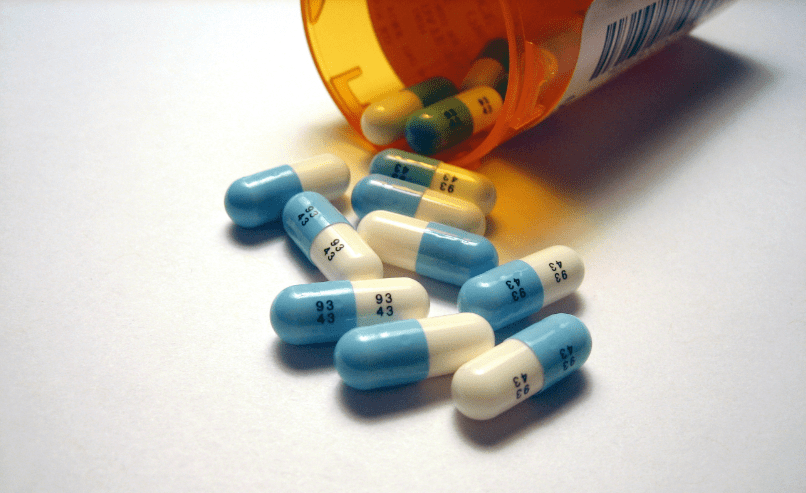Antidepressants have been widely used to reduce signs of major depressive disorder, panic disorder, and obsessive-compulsive disorder. Though these medications are not a cure or permanent treatment, they have been accepted for alleviating symptoms, such as sadness, feelings of helplessness, loss of interest, and even thoughts of suicide. They work by balancing chemicals in the brain. Thus, improving emotions and mood, promoting better sleep, and increasing concentration and appetite.
One of the most popular and most prescribed among the variety of antidepressants is Prozac (Fluoxetine). After being approved by the FDA in December 1987 and released in 1988, the medication has enjoyed massive market success and is popular despite the release of many newer medicines. In this article, let’s look back at the history of Prozac – one of the world’s most prescribed antidepressants.
The History of Prozac
Research and work started in 1960 at the Eli Lilly and Company in Indianapolis, Indiana, under the collaboration of three scientists. It all began with American scientist Ray Fuller when he used chloroamphetamine in treating rats and suppressed serotonin production to see how other drugs can affect serotonin levels. Fuller thought this technique could help advance studies on chemical balances in the brain and invited other scientists to the study.
In 1969, Scottish scientist Bryan B. Molloy joined the Eli Lilly and Company and focused his research on acetylcholine to the heart. Acetylcholine is an organic chemical that acts as the parasympathetic nervous system’s chief neurotransmitter.
Fuller advised Molloy to jilt the cardiac work and instead shift on finding a medication that won’t alter acetylcholine and one that won’t lead to side effects caused by tricyclics. Tricyclics are a line of antidepressants invented in the 1950s. While they’ve been effective, taking the drug led to unpleasant side effects, such as constipation, dizziness, and blurred vision.
Molloy agreed to Fuller’s proposal and started finding possible compounds for his work. With antihistamine medications that have been known to possess antidepressant-like properties and have been used to develop the earlier antidepressants, Molly centered on looking for ones that have the same composition as that of anti-allergy medications.
In 1971, David T. Wong, a scientist from Hongkong, joined the Eli Lilly and Company antidepressant project. In the same year, he and Molly attended a neurotransmission lecture conducted by American neuroscientist Solomon H. Snyder, who was then doing his research for Johns Hopkins School of Medicine. Snyder discussed a method he developed in his talk where he successfully took nerve-ending extracts from grounded rat brains and had them work like living nerve cells.
The said method was a huge help to the Eli Lilly and Company team as it allowed them to conduct tests using compounds found by Molloy and used them on chloroamphetamine-treated rats developed by Fuller. In May 1972, Wong carried out the experiment and found that the most potent among the compounds was Fluoxetine. It was able to inhibit serotonin reuptake without altering anything else.
In 1974, Wong published an article about their discovery of the compound. In 1975, the Eli Lilly and Company gave it the chemical name “Fluoxetine” and the trade name “Prozac.” A year later, the company submitted the new drug application for fluoxetine to the United States Food and Drug Administration (FDA.)
It took a decade for the fluoxetine to secure the final approval from the FDA, receiving it in December 1987 and assigned to be a drug for the treatment of depression. It has been tested and has been proven to be effective with lesser side effects. In 1988, Eli Lilly and Company marketed and released Prozac.
Doctors started to prescribe Prozac to their depressed patients, and the effects became impressive. Many patients claimed that the drug relieved their depression, made them feel better, and allowed them to experience a lighter aura without the “weight” that affected them before. Other reports from patients said their true personalities emerged and that they became more confident, outgoing, and spontaneous.
With such effects, Prozac quickly became popular. Doctors who were hesitant to prescribe tricyclics felt more comfortable providing patients with Prozac. In a few months, Prozac also toppled the leading antidepressant, Pamelor. Within two years after its release, pharmacies were fulfilling 65,000 monthly prescriptions of the drug. By 1990, Eli Lilly and Company’S Prozac had become the best-selling antidepressant medication of all time. At some point, the drug also reached a peak of $2.6 billion in annual sales. Within five years, about 4.5 million people in America had taken the drug, which was the swiftest acceptance for any psychiatric medication.
As Prozac became widely famous, scandals, lawsuits, and rumors soon faced the drug. Yet, the benefits it has brought many patients have propelled it against all the odds. Prozac proved to be one of the best biological innovations in the 80s and remains one of the most prescribed antidepressants until today.
